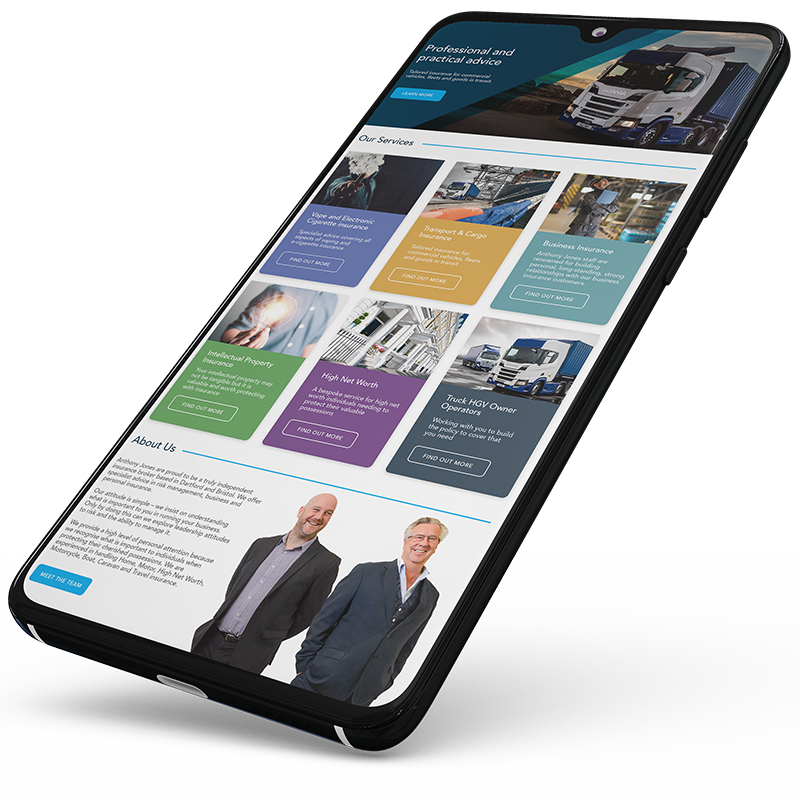A recent report revealed that 87% of professional drivers have driven while tired, despite being aware of the risks.
In this post we’ll outline the risks and underlying causes of driver fatigue, before discussing some ways you can help reduce fleet driver tiredness and fatigue.
For more information on how we can help you and your fleet, get in touch with us on 020 8290 9099 or email us at commercial.motor@anthonyjones.com.
What Are The Risks of Tired Drivers?
When you’re tired, you’ll struggle to concentrate, and your reaction speeds will decrease. This can impact your fleet in a number of ways:
- Safety – A tired driver may not react in time to a hazard, resulting in a collision. Or if they start to drift while travelling at high speeds on a motorway, it could lead to a major accident.
- Efficiency – A tired driver may struggle to maintain a consistent speed, and they may indulge in less efficient driving practices, such as harsh acceleration and braking. All of this can increase fuel consumption, which will drive up your running costs.
- Negligence – Tired drivers may overlook certain essential maintenance tasks or safety checks, which could result in increased downtime and costly repairs. They may also make poor route choices, which could increase your mileage and cause costly delays.
- Health and Wellbeing – In the long-term, excessive fatigue can lead to stress, anxiety, and burnout. This could affect your staff retention, as unhappy drivers may eventually decide to call it quits. And beyond this, prolonged fatigue can contribute to cardiovascular diseases and a range of mental health issues. Learn more about managing driver mental health and stress.
What Are The Main Causes of Driver Fatigue?
- Lack of sleep – Driving at night can affect a driver’s sleep patterns. This is why drivers are not supposed to work for more than 10 hours during the night within any 24 hour period, and why they’re required to take extensive breaks between shifts. But if a driver doesn’t get enough sleep during this break, then their performance is likely to suffer.
- Overwork – If a driver works irregular shift patterns, or if they work for too long without taking a break, then they’ll inevitably start to feel the strain. The nature of commercial motoring can also induce fatigue, as it can often involve performing repetitive and monotonous tasks for extended periods.
- Health issues – Both physical and mental health issues can affect a driver’s energy levels. Plus, if a driver has to take certain medications to manage their condition, then they may be subject to certain side effects, such as fatigue. A poor diet and a lack of exercise can also lead to chronic tiredness.
- Personal issues – If a driver’s worried about something in their personal life – whether it’s money troubles or a family issue – then it could affect their sleep and their concentration, which will in turn affect their work.
How To Reduce Driver Tiredness and Fatigue in Fleets
- Talk to your drivers. Most drivers already understand the risks of driving tired. But still, an open and honest driver communication strategy could make a difference. It’s not just about informing your drivers of the dangers of driving tired. It’s also about being open to discussing any concerns they might have that could be contributing to the issue.
- Strategic scheduling. There are certain regulations concerning the number of hours drivers are supposed to work in a given period. You can support your drivers to meet these regulations with a structured and strategic approach to scheduling. Plan your operations to ensure that drivers have enough time to rest between their shifts, and avoid situations that will place undue stress on any drivers in your fleet.
- Use technology. Tachographs are there to help drivers follow the rules for the number of hours they drive. Ensure that every driver knows how to calibrate and use their tachographs, and be sure to keep tabs on your tachograph data. This way you can intervene the moment a driver shows any signs that they’re driving for too long without a break.
- Encourage drivers to look after their wellbeing. Try to promote a healthy lifestyle, to encourage your drivers to eat well, to get plenty of sleep, and to exercise when possible. In the long-term, work to promote an overall fleet safety culture, in which drivers look out for themselves, and for each other.
Supporting You To Support Your Drivers
The Anthony Jones Resilience Report outlines a number of ways you can strengthen, support, and protect your drivers, resulting in a safer fleet and a healthier bottom line.
For more information on how we can help you and your fleet, get in touch with us on 020 8290 9099 or email us at commercial.motor@anthonyjones.com.


